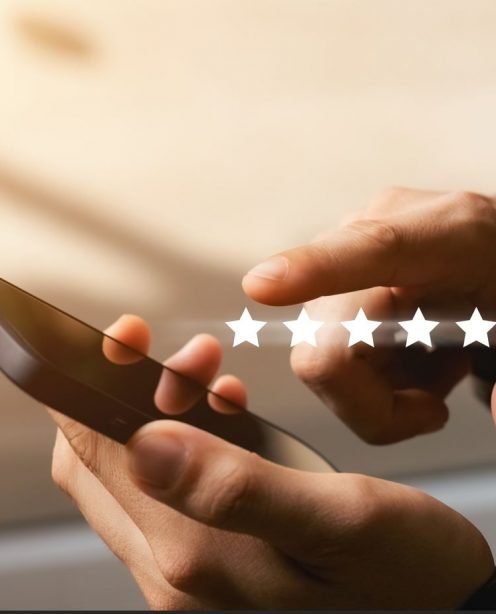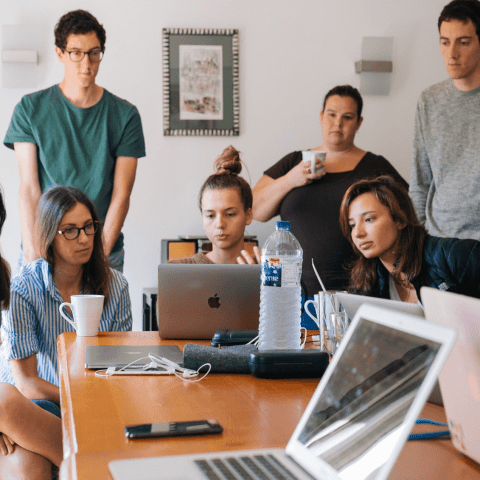Getting things online
With the collapse of public programming and working from home the new normal, many are focusing on their activities online, resurfacing existing content or getting new online activities underway. For NfP clients too, this has created a sudden need to rapidly scale up digital advocacy and digital fundraising at a time when supporter focus might reasonably be elsewhere.
It’s been great to see and hear of individual examples, alongside parts of the sector, responding so quickly in the short term: from One Further’s excellent list of organisations that includes streaming productions, concerts, talks, tours and whatever else is on at the moment, through to ACE’s emergency support package. We’ve also covered some ways in which organisations are engaging their audiences during this time of social distancing. Overall, there’s a lot of “adapting to the new reality” going on at a very rapid pace.
Technology as a critical enabler in innovation and storytelling
Whether it’s fast-tracking projects to broadcast more content, improving your online ecommerce offer, increasing digital marketing investment to reach greater audience numbers or giving members and audiences the opportunity to visit your gallery via a video conferencing robot (at the Hastings Contemporary), the need for organisations to engage with digital has never been greater.
The recent events have caused everyone to adapt to new situations and people are changing their habits both online and off. While organisations may have to pause or temporarily go dark, during tough times like this it is important to look forward and use the tools at our disposal to maximum effect.
Very quickly, very sharply, the Arts & Cultural, Heritage and NfP landscape has been turned on its head. If disruption leads to rapid development and innovation however, it will inevitably create new opportunities and new markets... and maybe even new value propositions - for example new membership and subscription models based on content replacing the old “empty tin rattling”. At the very least, if not already, performance measurement and measurable marketing ought to be at the heart of any (new or rapidly updated) digital strategy.
No matter what the medium or method of delivery and no matter what the situation, people will always crave and want to engage in the fundamental aspect of what Arts & Cultural organisations have to offer: storytelling. As human beings it’s in our DNA. As we said in the previous post, the web is not just for endless political scraps and virus progress updates, it’s very much for culture. This pandemic will pass and we will want to sit around the campfire together again.
Tactical and strategic ideas
So, how best to respond to this disruption digitally?
We think there are three strands of activity to consider:
Strand 1 - Tried and tested digital tactics, with low lead-in times
These are some quick actionable ideas that can help you get the ball rolling and provide some quick wins.
Resurface digital content, storytelling your collection
You will have existing digital content, bring it back to life - whether it’s in the form of virtual tours, videos, resource packs, podcasts, etc. For example, The Photographers Gallery Virtual Slow Art Day, The Courtauld Gallery Virtual Tour, the National Theatre have made their Collection accessible worldwide to educational institutions, whilst some other museums we work with such as Sir John Soane’s Museum, the Museum of Freemasonry and St Alban’s Museum already showcase various exhibitions and collections in ways that can be browsed on their websites in more interesting ways than just via their collection system.
Email campaigns to keep your existing audiences up to date
Most organisations would’ve already sent out some email communications centred around COVID-19-related updates, with some going further to disseminate messages of support and fundraising and advocacy asks.
However, beware of communication fatigue which is starting to instill as your audience will likely be receiving tens of COVID-19 emails, so only communicate when you have something of value to share and be very mindful of the tone of voice employed.
Appeals and support
Everything is shut down, so pivot your website and social media channels toward appeals and fundraising. You can do this by creating a specific appeal and promoting it on your site or via Facebook’s Donate feature if you qualify (and also boosting it using Facebook Ads). If you’re running a programme of events and a venue and you’re closed, and everything is postponed or cancelled and you can’t sell tickets, consider removing ‘What’s On’ and events from your site. This can create a real focus on your online activities instead, and you can see this in action on Broadway Cinema’s website.
If you're fundraising make sure your donation platform isn't costing you income (either via their charging structure or bad UX affecting your conversion rate).
Strand 2 - Optimisations building on your first wave of response
These short to mid-term tactics can help you reach the next level and making the most of your online presence, whilst your offline location is temporarily closed.
Switch the emergency messaging on your website’s homepage
By now everyone knows you're shut, so turn the ‘Due to the ongoing pandemic, unfortunately we have had to close our venue’ message into a more powerful call to action. The National Theatre strike the right note with their message (“Hopefully, you are visiting our website because you care as much about the National Theatre as we do. It is a hub of creativity, a place where ideas are born, nurtured and shared. Right now the National Theatre is closed and facing a devastating impact from Coronavirus. However, we're confident we will see this through because we're a strong and committed community. We recognise that this is a difficult time for many of us. However, if you are able to consider making a donation, it would be hugely appreciated.”) which is also situated right next to a Donation box, prominently featured on the homepage.
Optimise your email communications
Add fundraising footers in your non-donation emails. If not already, create an automated welcome email series for new sign-ups.
Optimise your fundraising tools
Ensure your Facebook Fundraising and Donate features are turned on, where applicable. You can also boost your efforts and gain a wider reach through Facebook Ads which are a low-cost advertising solution that you can use during this time to drive more donations, or grow your database of supporters.
Optimise your appeals
On the ‘Thank you’ page of one off donations, make sure to add Direct Debit / Membership / Subscription upsells - people are still highly motivated when they’ve just taken an action, no one will complain, and if you see even 2-4% conversion that’s a win. Create shoutouts and start fundraisers and petitions with an easy, follow-up action workflow leading through to sign-ups, appeals, and support campaigns.
Strand 3 - Longer-term strategic actions to future-proof your organisation online
Here we’re talking about more strategic tactics, with longer lead time, but with potential to deliver high returns over the longer haul. This might include completely new offerings and experimental tactics.
Put performance and measurable results at the heart of your (new) digital strategy
Re-evaluate your digital marketing strategy for the new normal, whilst also thinking about how you may need to change your messaging and campaigns long-term to drive performance online and achieve measurable results.
Start by identifying what content and tactics work best for your sector, and your organisation. Define your new goals and their priority, thinking about the next 6-12 months, and beyond. What do you need to achieve? Finding a new way of generating revenue? Strengthening engagement with your audience? Driving brand awareness for your organisation? Regardless of your goals, there will be appropriate digital marketing tactics you can use to help you achieve them.
Create an action plan and evaluate the resources you need to put it into motion - from talent and expertise, to advertising budgets. You may need to rethink your original budget for this year and redeploy some of the budget originally meant for traditional marketing activities or content-creation, to digital activities instead.
These can vary from running an SEO audit on your website and optimising your online content to improve your keyword rankings and drive more website traffic, to launching advertising campaigns across Google and Facebook to help you reach your goals both in the short and long-term (such as raising donations, increasing reach or improving engagement).
However, regardless of the key marketing tactics you choose to focus on, they will all need a strong foundation in the form of your website, and the content available on there, which leads us on to the next point...
Dedicating more resources to your online presence and investing in digital content
If staff teams have the capacity, some of this time that would normally be spent on campaign work could be spent on more strategic experimentation and planning.
One such experiment on a longer term development could be assessing your membership and one off donation campaigns and drivers. This time could be spent bringing your marketing and fundraising teams together to see if they can develop a model for new content-driven donation and/or membership offerings.
Whilst ongoing supporter/membership driven platforms such as Patreon comes with fees which may not suit your organisation, and users’ expectations of exclusive gated content may be difficult to manage with a skeleton staff, think about how you might be able to offer content in a similar manner with the tools you have.
The content doesn’t have to be a switch to producing new work, optimised for an digital experience, especially given the time and money this can cost. Once they’ve all binged Tiger King, your online audience’s appetite for new content could be sated with unseen gems from your archives (see everyone’s favourite agricultural museum, the MERL’s twitter account for years of evidence). You can easily get started by:
- showcasing past behind the scenes videos
- resurrecting those early forays into podcasting
- putting together a list of your favourite, relevant audio series
- simply returning to the grand old days of blogging and start writing on a different theme each week, sharing your collections, production photos or interviews with colleagues.
Alongside this, think about what action you want your audience to take.
Is this content worth something to them? Ask them to make a one off donation - and put a donation button alongside this new gallery or at the bottom of your post.
Want them to keep returning? Think about how your memberships could tie into this ongoing engagement - can you offer more content should they sign up as a member through a series of member-only lockdown newsletters?
Another option is offering audiences access to exclusive content (could be archive recordings, podcast episodes, live Q&As or digital workshops) through pay-what-you-can, one off donations, or subscriptions / content-only memberships.
If you do start thinking about memberships which are gated-content driven, you may have to consider the complicated nature of working out if any of these ‘donations’ are valid for gift-aid.
Getting started
Whether you’re looking for some quick wins, or need a helping hand with your long-term digital strategy, we’re here for you.
We have over 20 years of experience helping organisations just like yours make the most of their online presence, and we’re only one email away.




